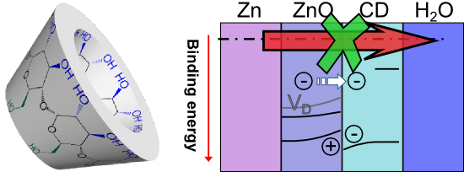Search results
Search for "defect chemistry" in Full Text gives 4 result(s) in Beilstein Journal of Nanotechnology.
Measurement of polarization effects in dual-phase ceria-based oxygen permeation membranes using Kelvin probe force microscopy
Beilstein J. Nanotechnol. 2021, 12, 1380–1391, doi:10.3762/bjnano.12.102

- indicator for local changes of the defect chemistry, as it is directly related to the local Fermi level [20]. The defect chemistry of acceptor-doped ceria and the oxide ion/electronic transport within ceria single-phase materials and also for ceria-based dual-phase materials is well understood at
- % FeCo2O4 (CSO-FC2O) as electron-conductive phase in order to, first, locally change the defect chemistry of the material and, then, study the relaxation to the original surface potential state during uptake/release of oxygen from/to the surrounding air. By using an AFM tip as an electron-conductive
Cyclodextrin inhibits zinc corrosion by destabilizing point defect formation in the oxide layer
Beilstein J. Nanotechnol. 2018, 9, 936–944, doi:10.3762/bjnano.9.86

- that affecting the defect chemistry of passivating films by molecular inhibitors maybe a viable strategy to control corrosion of metals. Keywords: band diagram; defect chemistry; organic corrosion inhibitors; X-ray photoelectron spectroscopy; zinc corrosion; Introduction Organic corrosion inhibitors
- interface, making the interface behave similarly to an n–p junction. Charge transport is hence only possible from the n-type ZnO to β-CD, which behaves like a p-type layer, effectively blocking the anodic reaction. Most decisively, the energy level shift induced by the changes in the defect chemistry
- because of β-CD adsorption is too high to enable easy electron transfer at active corrosion conditions. This work shows that the energy level alignment across the interface can be significantly affected by the presence of simple organic molecules. The defect chemistry of the oxide plays also an important
Growth, structure and stability of sputter-deposited MoS2 thin films
Beilstein J. Nanotechnol. 2017, 8, 1115–1126, doi:10.3762/bjnano.8.113

- variations in doping were described to be defect chemistry related and independent of contact metal. Combined this shows that variations in Mo/S stoichiometry can have severe effects on electrical transport properties of MoS2 films. As described above, our PVD MoS2 films here are generally enriched in S
Towards precise defect control in layered oxide structures by using oxide molecular beam epitaxy
Beilstein J. Nanotechnol. 2014, 5, 596–602, doi:10.3762/bjnano.5.70

- structural defects, with the aim of tailoring their functional properties by precise defects control. Keywords: artificial superlattices; complex oxides; defect chemistry; interface effects; molecular beam epitaxy; Introduction The progress in the synthesis of layered complex oxide compounds with high
- underlying complex oxides and interfaces properties and to synthetize novel compounds and devices, giving particular importance to the role of defect chemistry in the definition of the functionalities and to the possibility of tuning them through a control of defects concentration and distribution. Oxide MBE


































